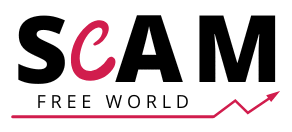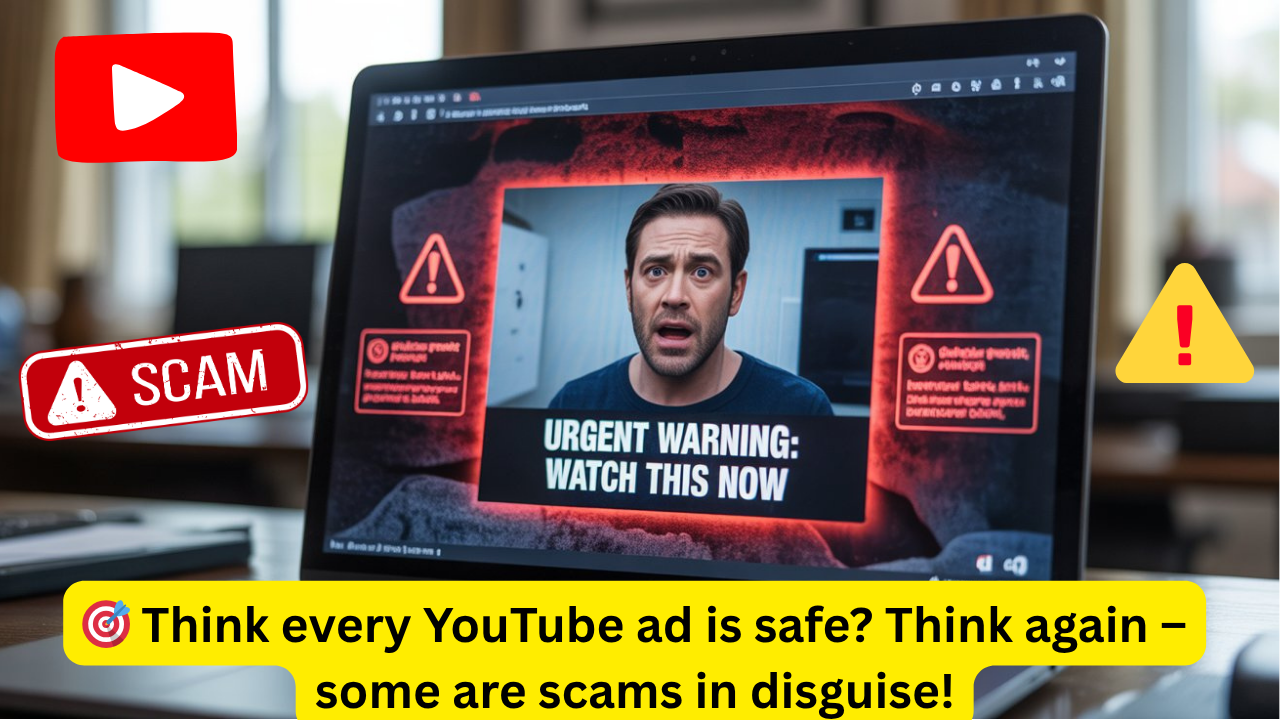When the Ad You Click Isn’t What It Seems
YouTube has become more than just a platform for cat videos, gaming livestreams, and music premieres—it’s a massive advertising powerhouse. With over 2 billion logged-in users every month, it’s no surprise that brands see YouTube as prime real estate for promoting their products. But alongside genuine advertisers lurks a growing menace: scam ads on YouTube.
These scams are not the clumsy, poorly spelled phishing attempts of the past. Today’s fraudulent ads are slick, professional-looking, and often weaponised with deepfake technology to impersonate trusted public figures. They’re designed to get you to click, believe, and part with your money—often before you realise anything’s wrong.
The problem has grown so severe that politicians, cybersecurity experts, and consumer watchdogs are calling for urgent regulation. But until stricter controls are in place, the burden of defence often falls on us, the viewers.
Why Scam Ads on YouTube Are Surging in 2025
The rise in scam ads on YouTube isn’t happening in a vacuum—it’s a perfect storm of opportunity for cybercriminals. Here’s why these scams are becoming more prevalent and more convincing:
- Low Barrier to Entry for Advertisers
Unlike traditional media advertising, YouTube’s ad approval process is largely automated. This means malicious actors can quickly upload scam ads, run them across targeted demographics, and vanish before detection. - Exploiting Trust in Influencers and Public Figures
Scammers are now using deepfake technology to create eerily realistic videos of celebrities, financial experts, or political figures endorsing fake products or investment schemes. If you’ve ever thought, “If they’re saying it, it must be real,” you’re exactly who they’re targeting. - Algorithmic Targeting
YouTube’s ad platform allows for highly precise targeting based on viewing habits, location, age, and interests. This means scam ads can zero in on vulnerable groups—retirees looking for investment tips, job seekers searching for side hustles, or health-conscious viewers exploring wellness products. - The Cost of Clicks is Low, but the Payout is Huge
Even if only 0.1% of viewers fall for the scam, the payoff for fraudsters can be massive, especially when they’re promoting fake investments or cryptocurrency schemes.
Common Types of Scam Ads You’ll See on YouTube
Knowing the shapes these scams take can help you spot them before you get caught in their trap.
1. Investment Scams
These ads promise “guaranteed” returns, often in crypto or stocks. They may use deepfake videos of famous entrepreneurs like Elon Musk or UK business leaders, claiming they’ve discovered a “secret” investment strategy.
Red flag: Any ad that guarantees profits or uses urgency to pressure you to “invest now” is almost certainly a scam.
2. Fake Celebrity Endorsements
Scammers create videos of celebrities “promoting” products they have no real connection to. You might see a politician pushing a health drink, or a sports star promoting a weight loss plan.
Red flag: Celebrities rarely advertise niche products on random YouTube ads, especially if it’s unrelated to their career.
3. Giveaway or Prize Scams
These ads claim you’ve won a prize—an iPhone, cash, or a gift card—and all you have to do is “confirm” your details or pay a small “shipping fee.”
Red flag: You can’t win a prize in a competition you never entered.
4. Fake Tech Support Ads
Some ads pretend to be from Microsoft, Apple, or antivirus companies, claiming your device is infected and urging you to click a link to “fix” it. That link usually downloads malware.
Red flag: No legitimate tech company will advertise virus alerts through YouTube ads.
5. Health & Wellness Scams
Miracle cures, weight loss pills, anti-ageing serums—all pushed with “before and after” pictures and fake testimonials.
Red flag: If it sounds too good to be true, it usually is.
Real-World Example: A Deepfake Scam That Fooled Thousands
In July 2025, a wave of scam ads on YouTube hit the UK, showing a convincing deepfake of a well-known finance TV host promoting a “government-backed savings program.” The ad featured professional production values, a fake BBC News banner, and a clickable link to a cloned government website.
Victims thought they were signing up for a secure investment, only to have their savings drained into offshore accounts. The scam was live for almost a week before YouTube took action, by which time thousands had already lost money.
Why These Ads Are Dangerous
The danger of scam ads on YouTube lies in their credibility. Unlike spam emails, which many people recognise instantly, these ads are polished, targeted, and presented within a platform people trust. Many victims only realise they’ve been scammed after it’s too late.
These ads can lead to:
- Financial loss (sometimes life savings)
- Identity theft
- Malware infections
- Loss of trust in legitimate online businesses
Who’s Most at Risk?
While anyone can be fooled, certain groups are more vulnerable:
- Older adults who may be less familiar with online scams.
- Young people attracted to “easy money” schemes.
- Job seekers desperate for income.
- People in financial distress, who are more likely to take risks.
What’s Being Done About It?
UK politicians, including members of the Liberal Democrats, have called for urgent regulation of digital advertising platforms like YouTube. They argue that scam ads should be treated as seriously as fraudulent TV or newspaper ads.
Consumer protection groups are also pressuring Google (YouTube’s parent company) to:
- Implement stricter ad verification processes
- Use human reviewers for financial and investment ads
- Create a fast-track reporting system for suspected scam ads
YouTube, for its part, claims it’s improving its detection systems and removing millions of violating ads every year—but clearly, many still slip through the cracks.
How to Protect Yourself from Scam Ads on YouTube
Here are practical steps you can take to stay safe:
- Verify Before You Click
If an ad makes a claim that seems exciting or urgent, search for the product, company, or offer independently—don’t click the ad. - Check the Channel’s Authenticity
Real companies have verified YouTube channels. Scam ads often link to new or obscure accounts with few subscribers. - Look for Signs of Manipulation
If the speaker’s lips don’t quite match their words, or the video feels “off,” it may be a deepfake. - Use YouTube’s ‘Report Ad’ Feature
Click the small “i” icon or the three dots on the ad and choose “Report ad.” This flags it for review. - Install Security Tools
Browser extensions and antivirus software can block known scam domains.
If You’ve Fallen for a Scam Ad
- Stop All Communication with the scammer immediately.
- Contact Your Bank to freeze or reverse transactions.
- Change Your Passwords, especially for email and financial accounts.
- Report It to Action Fraud (UK) at www.actionfraud.police.uk.
- Warn Others by sharing your experience online—this can stop someone else from becoming a victim.
The Bigger Picture: Why Regulation Matters
The growth of scam ads on YouTube isn’t just a consumer problem—it’s a societal one. These scams undermine trust in digital platforms, distort online advertising markets, and funnel millions into the hands of criminal networks.
Experts warn that without stronger regulation, the scams will only get more sophisticated. Deepfake technology is improving rapidly, and soon, fake ads may be indistinguishable from reality.
Conclusion: Stay Alert, Stay Informed
Scam ads on YouTube are not a minor annoyance—they’re a global fraud machine disguised as everyday advertising. They target our trust in the platform, our belief in public figures, and our desire for quick solutions.
By staying informed, sceptical, and proactive, we can reduce their impact. But until stronger protections are in place, the best defence is awareness—because the next scam ad you see might look more real than reality itself.
Read More Blogs – https://scamfreeworld.co.uk/sms-blaster-scam/

